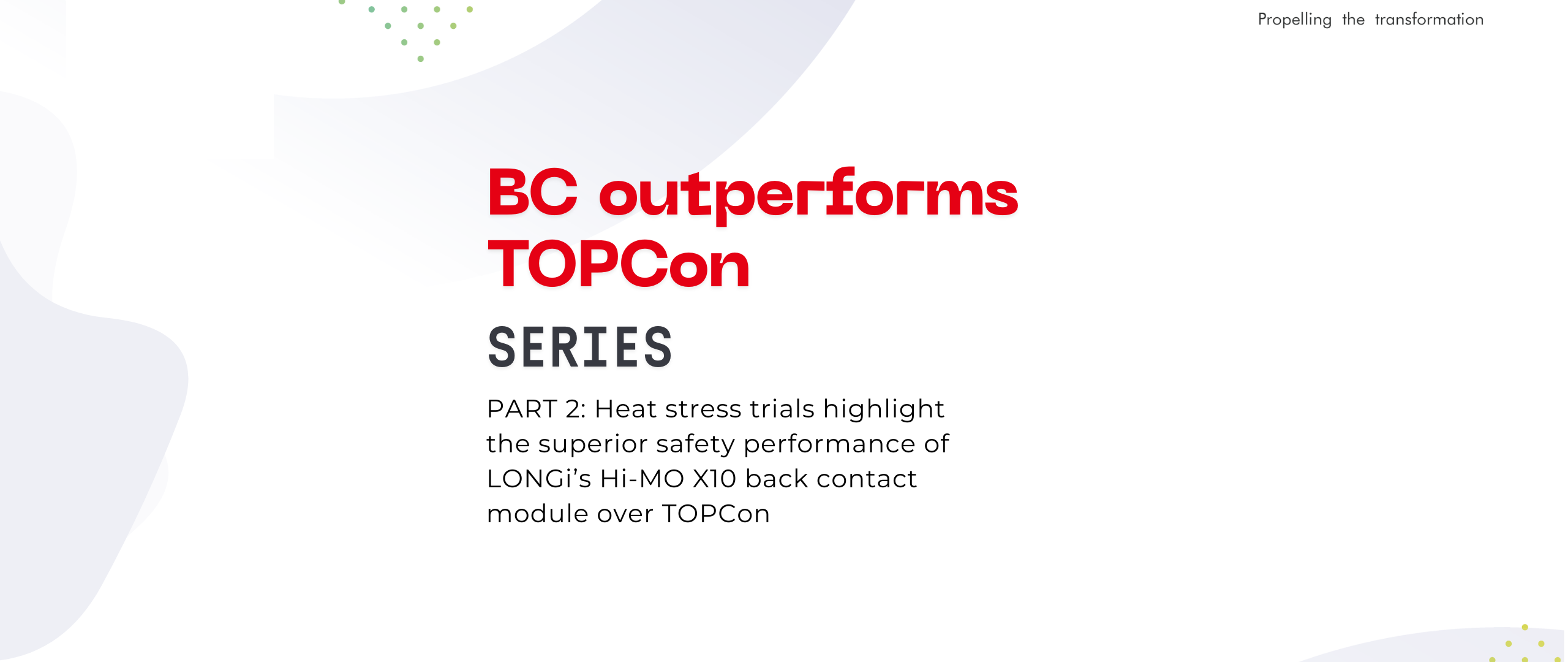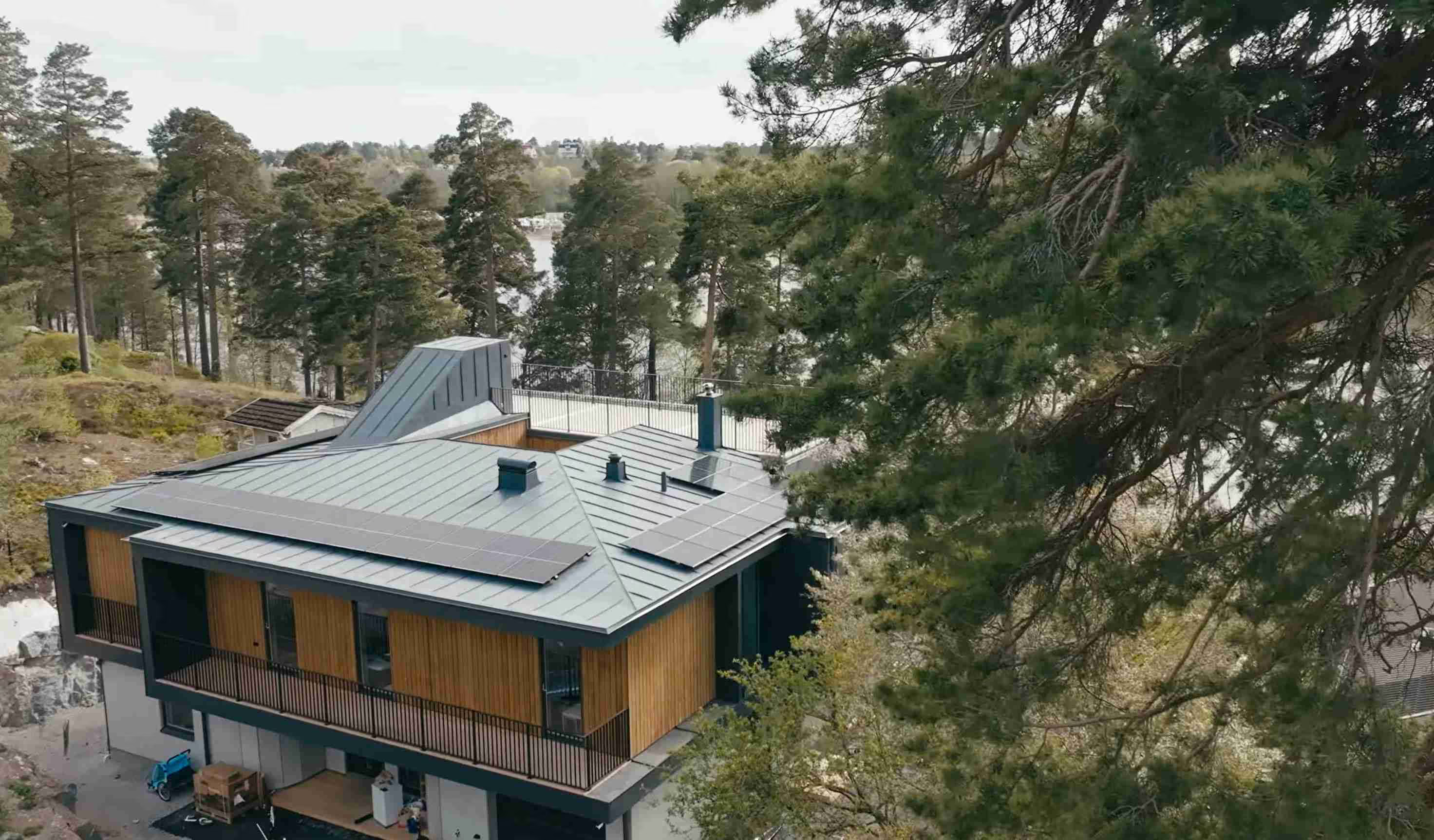BC outperforms TOPCon series - Part 2: Heat stress trials highlight the superior safety performance of LONGi’s Hi-MO X10 back contact module over TOPCon

Date
November 24, 2025
read time
3
Minutes
Subscribe to the LONGi Newsletter
Following our previous analysis of shadow and soiling performance, we return to the testing grounds to address the most critical aspect of rooftop solar: Safety.
While power generation is the goal, safety is the bottom line. As surface temperatures on rooftops can soar, hidden hazards like the "hot spot effect" become genuine concerns for PV system owners. In Part 2 of our "BC outperforms TOPCon" series, the LONGi Hi-MO X10 with HPBC 2.0 is tested against a standard TOPCon module in two focused heat stress experiments, the Marshmallow Melt and the Balloon Burst.
Conducted in Xi’an, China during the peak heat of summer, these experiments reveal how different cell technologies handle the heat when the pressure is on.
Side-by-side heat trials in Xi’an reveal how modules manage hidden fire risks
The stage was set in Xi’an during July, where the environment naturally pushes solar technology to its limits. With ambient surface temperatures nearing 70°C and air temperatures exceeding 40°C, the conditions were ideal for testing thermal management.
Both the Hi-MO X10 back contact module and the generic TOPCon module were installed side-by-side under identical conditions. To ensure fairness, a professional radiometer was used to verify that the solar radiation intensity was nearly equal for both contestants, registering 871.7 W/m² for the Hi-MO X10 and 867.0 W/m² for the TOPCon module. With the environment calibrated, we looked to answer a burning question: How do these panels address hidden fire hazards?
Test 1: The Marshmallow Melt Test
For this round, we simulated a shading scenario, which is the primary cause of hot spots in residential and commercial installations. We applied temperature-sensitive stickers, labeled for 60°C, 80°C, 100°C, and 120°C, to the same surface area of both modules. These acted as both shading objects and immediate visual temperature indicators.
Results: Shading test shows rapid heat buildup on TOPCon module
After just ten minutes of shading, the difference in thermal regulation was already apparent. On the Hi-MO X10, only the 60°C stickers had changed color. In stark contrast, the TOPCon module triggered both the 60°C and 80°C stickers, indicating a much faster and more aggressive internal temperature rise.
To visualize the severity of this heat accumulation, we placed a marshmallow directly on the hotspot created by the shading. On the Hi-MO X10, the result was uneventful: After five seconds, the module remained steady as a mount, and the marshmallow sat unchanged. However, the situation on the TOPCon module was drastically different. Within five seconds, the marshmallow began to melt rapidly, liquefying due to the intense localized heat.
Outcome: Temperature readings confirm a 93.7°C hotspot difference compared to back contact.
Using a professional thermometer to detect the specific hot spot temperatures, the data confirmed what the marshmallow demonstrated. The Hi-MO X10 peaked at a safe 67.5°C, effectively suppressing the hot spot effect. The TOPCon module, however, soared to a dangerous 161.2°C. This represents a staggering temperature difference of 93.7°C, highlighting a severe disparity in safety performance between the two technologies.
Test 2: The Balloon Burst Experiment
In our final round, we raised the stakes with a "hot spot burst challenge" to simulate the immediate danger of catastrophic thermal failure. This test was conducted on June at 2 PM, once again ensuring identical installation and radiation conditions. As with the previous test, we used temperature-sensitive stickers to create shading.
Results: Back contact maintains low temperatures as TOPCon triggers all heat indicators
After ten minutes of shading, the thermal behavior of the two modules diverged sharply. The Hi-MO X10 remained cool, with mostly 60°C stickers changing color and only a single 80°C sticker turning. The TOPCon module struggled significantly, triggering all stickers including the 120°C indicators.
We then placed inflated balloons, filled with standard respiratory air, simultaneously on the shaded areas of both modules. A balloon offers a clear binary result for thermal stress. It either survives the heat, or it bursts.
Back contact remains safe while TOPCon reaches 161.2°C under shading
The result was instantaneous. The balloon placed on the TOPCon module burst immediately upon contact. Its structural integrity was compromised in a split second by the concentrated heat. Conversely, the balloon on the Hi-MO X10 did not burst, resting on the panel surface without incident.
The thermal data backed up the visual evidence. While the Hi-MO X10 maintained a maximum temperature of 70.2°C, avoiding the hot spot effect entirely, the TOPCon module once again reached 161.2°C. This 90.9°C temperature difference underscores the volatility of traditional contact technologies under shading stress.
Conclusion: Back contact architecture with LONGi’s HPBC 2.0 strengthens rooftop fire safety
These experiments show that back contact technology delivers more than aesthetic or efficiency benefits, and plays a decisive role in rooftop safety.
When a standard TOPCon module is shaded, the blocked current can force the cell to heat up rapidly, creating temperatures exceeding 160°C. In contrast, the Hi-MO X10 with HPBC 2.0 technology utilizes a unique electrical structure called weak conduction design. It allows current to bypass shaded areas, effectively suppressing hotspot formation before it becomes a hazard.
The Hi-MO X10 offers a comprehensive defense for rooftop owners, combining fire prevention, and anti-shading performance. By eliminating the risk of extreme hot spots, the Hi-MO X10 back contact module acts as the safety guard of rooftops, securing not just the building, but the long-term revenue of the power station.
Back contact modules are widely recognized for these safety-related advantages, uniting low hotspot susceptibility with stable thermal behavior even under irregular shading. Their inherent structural resilience supports predictable performance throughout the system’s lifetime, strengthening both operational safety and long-term energy yield.




